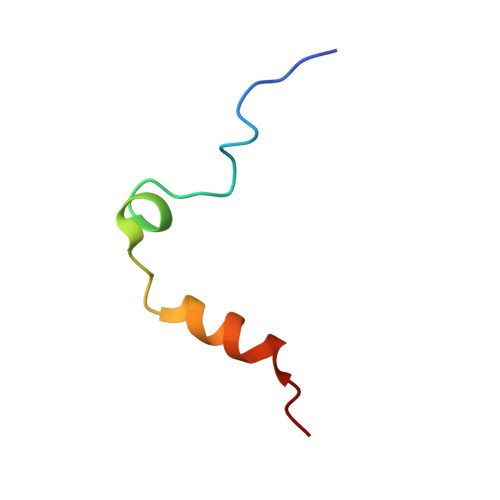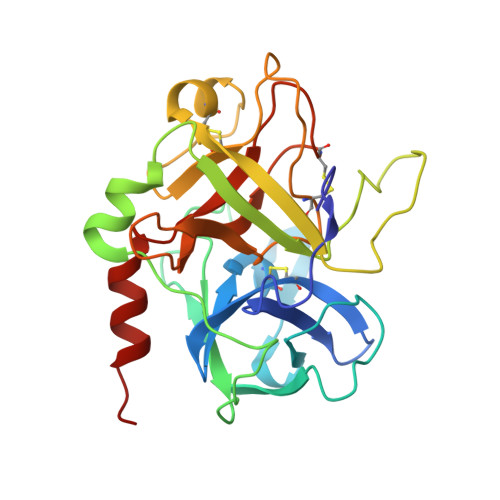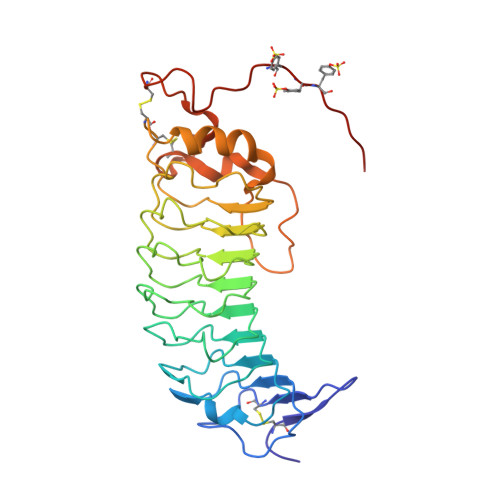Binding of alpha-thrombin to surface-anchored platelet glycoprotein Ib(alpha) sulfotyrosines through a two-site mechanism involving exosite I.
Zarpellon, A., Celikel, R., Roberts, J.R., McClintock, R.A., Mendolicchio, G.L., Moore, K.L., Jing, H., Varughese, K.I., Ruggeri, Z.M.(2011) Proc Natl Acad Sci U S A 108: 8628-8633
- PubMed: 21555542
- DOI: https://doi.org/10.1073/pnas.1017042108
- Primary Citation of Related Structures:
3PMH - PubMed Abstract:
The involvement of exosite I in α-thrombin (FIIa) binding to platelet glycoprotein Ibα (GPIbα), which could influence interactions with other substrates, remains undefined. To address the problem, we generated the GPIbα amino terminal domain (GPIbα-N) fully sulfated on three tyrosine residues and solved the structure of its complex with FIIa. We found that sulfotyrosine (Tys) 278 enhances the interaction mainly by establishing contacts with exosite I. We then evaluated how substituting tyrosine with phenylalanine, which cannot be sulfated, affects FIIa binding to soluble or surface-immobilized GPIbα-N. Mutating Tyr(276), which mostly contacts exosite II residues, markedly reduced FIIa interaction with both soluble and immobilized GPIbα-N; mutating Tyr(278) or Tyr(279), which mostly contact exosite I residues, reduced FIIa complexing in solution by 0-20% but affinity for immobilized GPIbα-N 2 to 6-fold, respectively. Moreover, three exosite I ligands--aptamer HD1, hirugen, and lepirudin--did not interfere with soluble FIIa complexing to GPIbα-N, excluding that their binding caused allosteric effects influencing the interaction; nonetheless, all impaired FIIa binding to immobilized GPIbα-N and platelet GPIb nearly as much as aptamer HD22 and heparin, both exosite II ligands. Bound HD1 and hirugen alter Trp(148) orientation in a loop near exosite I preventing contacts with the sulfate oxygen atoms of Tys(279). These results support a mechanism in which binding occurs when the two exosites of one FIIa molecule independently interact with two immobilized GPIbα molecules. Through exosite engagement, GPIbα may influence FIIa-dependent processes relevant to hemostasis and thrombosis.
Organizational Affiliation:
Department of Molecular and Experimental Medicine, Roon Research Center for Arteriosclerosis and Thrombosis, The Scripps Research Institute, La Jolla, CA 92037, USA.




















